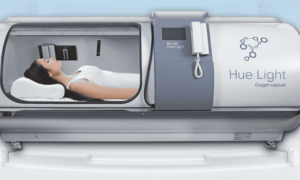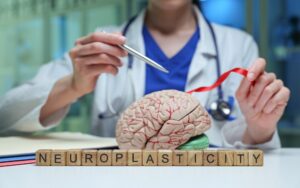The human brain is an astonishing organ constantly learning, adapting, and orchestrating every function of the body. It is also one of the most oxygen-dependent tissues we possess. Even a brief interruption in oxygen supply can cause confusion, dizziness, and long-term neurological damage. In recent years, Hyperbaric Oxygen Therapy (HBOT) has emerged as a revolutionary medical and wellness treatment that enhances oxygen delivery to the brain, promoting healing, regeneration, and improved mental performance.
Originally developed for deep-sea divers suffering from decompression sickness, HBOT has since expanded into various fields of medicine, from treating chronic wounds to improving neurological conditions. What makes HBOT fascinating is its profound effect on neuroplasticity, the brain’s ability to reorganize and form new connections throughout life. Researchers are now exploring HBOT as a tool not only for recovery but also for optimizing brain health, memory, and cognition.
Key Takeaways
HBOT significantly increases oxygen delivery to the brain, supporting cognitive recovery and neurological repair.
It stimulates neuroplasticity, helping the brain form new connections after stroke, trauma, or oxygen deprivation.
Studies show HBOT can improve memory, attention, mood, and learning ability by enhancing cellular energy and reducing inflammation.
Regular sessions may contribute to anti-aging benefits, improved sleep, and greater mental clarity.
What Is Hyperbaric Oxygen Therapy (HBOT)?

Hyperbaric Oxygen Therapy involves breathing 100% pure oxygen inside a pressurized chamber, typically at a pressure 1.5 to 3 times higher than normal atmospheric pressure. Under these conditions, the lungs can absorb significantly more oxygen than they can under normal circumstances. This oxygen dissolves not just into red blood cells but also into the plasma, cerebrospinal fluid, and other bodily tissues.
The increased oxygen concentration allows the body to repair damaged tissues, reduce inflammation, and stimulate new cell growth. In the context of brain health, this process delivers a critical boost to areas of the brain that have been deprived of oxygen due to injury, stroke, or poor circulation.
HBOT can be administered in two main types of chambers:
- Monoplace chambers: designed for a single person and filled with pure oxygen.
- Multiplace chambers: larger chambers accommodating multiple individuals who breathe oxygen through masks or hoods.
Each session typically lasts between 60 to 120 minutes, and depending on the condition, a patient might undergo 20 to 60 sessions or more.
Related Article: Hyperbaric Oxygen Chamber Benefits
The Science of Oxygen and the Brain
Oxygen is the foundation of life. Every brain cell requires a constant oxygen supply to produce adenosine triphosphate (ATP), the molecule responsible for energy production. When the brain doesn’t receive enough oxygen, neurons struggle to communicate efficiently, leading to cognitive fatigue, memory lapses, or even cell death.
During normal breathing at sea level, oxygen saturation in the blood remains around 97–99%. However, this doesn’t necessarily mean that oxygen is adequately distributed throughout the brain. In conditions such as stroke, traumatic injury, or neurodegenerative disease, some regions of the brain experience hypoxia (oxygen deprivation), creating dormant but potentially recoverable cells.
By dramatically increasing oxygen levels, HBOT reactivates these silent cells, restoring their function. The therapy’s ability to deliver oxygen directly to damaged tissue regions helps rebuild the energy required for cell repair and neural signaling, supporting both recovery and neuroplastic adaptation.
How HBOT Enhances Brain Function
HBOT affects the brain in multiple interrelated ways, each contributing to better mental performance and healing.
1. Improved Blood Flow and Oxygen Delivery
HBOT enhances microcirculation, ensuring oxygen reaches even the smallest capillaries in the brain. This increased blood flow not only supplies oxygen but also removes waste products more efficiently.
2. Reduction in Inflammation
Chronic neuroinflammation is a key factor in brain aging and diseases such as Alzheimer’s and Parkinson’s. HBOT suppresses inflammatory cytokines and activates antioxidant enzymes, protecting neurons from oxidative stress and reducing swelling in brain tissues.
3. Cellular Repair and Regeneration
Oxygen plays a vital role in DNA repair, collagen formation, and stem cell activation. HBOT accelerates the body’s natural healing process by stimulating stem cells to migrate to injured brain areas and promote tissue regeneration.
4. Enhanced Mitochondrial Function
Mitochondria are the powerhouses of neurons. HBOT increases mitochondrial activity, promoting more efficient ATP production. The result is improved cellular energy, faster signal transmission, and better overall cognitive performance.
5. Angiogenesis: Growth of New Blood Vessels
Research shows that HBOT stimulates the release of vascular endothelial growth factor (VEGF), promoting the growth of new capillaries and blood vessels. This improves long-term oxygen supply to the brain and enhances resilience against future injuries.
Understanding Neuroplasticity

Neuroplasticity is the brain’s remarkable ability to reorganize itself by forming new neural pathways. It allows us to learn new skills, recover after injury, and adapt to new environments. Every experience, from learning a new language to practicing mindfulness, triggers neuroplastic changes in the brain.
When neurons are damaged due to trauma or oxygen deprivation, neuroplasticity helps the brain recruit nearby cells to take over lost functions. However, this process requires adequate energy and oxygen. That’s where HBOT becomes invaluable; it provides the biological fuel necessary to activate these self-repair mechanisms.
Hyperbaric Oxygen Therapy for Brain Trauma
Traumatic brain trauma often leads to cellular hypoxia, inflammation, and loss of neural connections. Hyperbaric Oxygen Therapy for brain trauma helps counter these effects by flooding the brain with oxygen, revitalizing dormant neurons, and promoting neuroplasticity.
Research shows that HBOT can restore metabolic activity in regions affected by trauma, leading to measurable improvements in memory, coordination, and mood. In military and sports-related brain trauma cases, patients have reported faster recovery, reduced headaches, and enhanced focus following a series of HBOT sessions. By improving oxygen delivery and stimulating angiogenesis, HBOT supports long-term brain regeneration and resilience after trauma.
Key Study: HBOT improves neurological outcomes in severe TBI
Hyperbaric Oxygen Therapy for Brain Injury
Hyperbaric Oxygen Therapy for brain injury has become a vital component of modern neurorehabilitation. After an injury, the brain often struggles to heal due to oxygen deprivation and inflammation. HBOT provides a controlled oxygen-rich environment that accelerates cellular repair and restores neurological function.
Several studies on patients with traumatic brain injury (TBI) and post-concussion syndrome reveal significant improvements in attention, memory, and sleep quality after HBOT. It also reduces oxidative stress and supports the release of growth factors like BDNF, which aids in the formation of new neural connections. HBOT’s ability to reoxygenate damaged areas makes it one of the most effective non-invasive treatments for brain injury recovery.
Key Studies:
HBOT and Neuroplasticity: The Biological Connection
HBOT enhances neuroplasticity in several key ways:
- Increased Oxygen Availability:
The brain uses oxygen to synthesize neurotransmitters, repair membranes, and maintain synaptic connections. HBOT ensures consistent oxygen availability for all these processes. - Activation of Stem Cells:
HBOT stimulates the release of stem cells from bone marrow, which can differentiate into neurons and glial cells vital for repairing damaged brain tissue. - Stimulation of Growth Factors:
HBOT boosts levels of Brain-Derived Neurotrophic Factor (BDNF), a protein critical for neuron survival and the creation of new synapses. BDNF supports learning, memory, and resilience against stress. - Enhanced Synaptic Signaling:
By improving cellular energy and ion exchange, HBOT strengthens synaptic signaling, allowing faster and more efficient communication between neurons. - Reactivation of Dormant Neurons:
Studies show HBOT can “wake up” idling neurons in areas affected by stroke or trauma, restoring cognitive and motor functions that were previously impaired.
Clinical Evidence: HBOT for Brain Injury and Cognitive Disorders
Over the past two decades, numerous clinical trials and research studies have explored how HBOT benefits the brain. Below are some of the key findings across different conditions:
1. Traumatic Brain Injury (TBI)
Patients suffering from TBI often experience long-term cognitive deficits due to oxygen deprivation and inflammation. Studies have shown that HBOT improves memory, attention, and mood in these patients by reactivating damaged neurons. A 2013 study published in PLoS ONE demonstrated significant improvements in brain metabolism and cognitive performance following 40 HBOT sessions in mild TBI patients.
2. Stroke Recovery
After a stroke, certain parts of the brain lose oxygen and become dormant. HBOT helps restore function in these “sleeping” regions. Research published in PubMed 2020 found that stroke survivors treated with HBOT regained mobility, speech, and cognitive ability faster than those without therapy.
3. Autism Spectrum Disorders (ASD)
HBOT has shown promise in children with autism by reducing neuroinflammation and improving mitochondrial function. BMC Pediatrics 2009 studies report improvements in eye contact, communication, and social interaction, though research is ongoing to validate these outcomes.
4. Alzheimer’s and Dementia
Alzheimer’s disease is characterized by chronic inflammation, oxidative stress, and reduced brain blood flow. HBOT counteracts these factors by enhancing oxygen delivery, promoting angiogenesis, and reducing plaque buildup. Frontiers Aging Neuroscience 2024 shows that HBOT can improve mental clarity and slow cognitive decline in early-stage patients.
5. Depression and PTSD
Chronic stress and trauma affect brain chemistry and blood flow. A 2024 randomized sham‑controlled trial found that 60 sessions of HBOT significantly reduced CAPS‑5 scores (a measure of PTSD severity) in combat‑associated PTSD.
HBOT and Brain Detoxification
Another key benefit of HBOT lies in its detoxifying effect. The brain accumulates waste products, including amyloid plaques and metabolic toxins. HBOT enhances lymphatic drainage and the glymphatic system, which clears these toxins more efficiently during rest and recovery. Improved detoxification supports clearer thinking, better sleep, and long-term brain health.
HBOT for Anti-Aging and Cognitive Longevity
Aging naturally reduces oxygen efficiency in the body, leading to slower cognitive processing and memory issues. Hyperbaric Oxygen Therapy (HBOT) helps counteract this by boosting oxygen delivery, rejuvenating mitochondria, stimulating collagen, and promoting cellular renewal.
A 2020 study by Tel Aviv University found that older adults who underwent 60 HBOT sessions showed improved cognitive function and increased telomere length, a key marker of cellular aging. Telomere length increased by 20–38% in various immune cells, and senescent T-helper cells decreased by 37%, suggesting that HBOT may slow or even reverse certain aspects of brain aging.
While further research is needed, HBOT represents a promising approach for cognitive longevity, brain repair, and healthy aging.
Related Article: Hyperbaric Oxygen Therapy for Anti-Aging
What to Expect During HBOT Sessions
Each HBOT session is a relaxing experience lasting about 60 to 90 minutes. Patients sit or lie inside the chamber as the pressure slowly increases. During treatment, you may feel mild pressure in your ears, similar to ascending in an airplane, which can be relieved by swallowing or yawning.
After sessions, many report feeling energized, clear-headed, and mentally refreshed. The number of sessions required varies based on individual conditions, from 10 sessions for general wellness to 40–60 for neurological recovery.
Safety:
HBOT is generally considered safe when performed under medical supervision. Minor side effects like ear discomfort or sinus pressure can occur, but are temporary. Patients with lung issues or ear infections should consult their doctor before starting therapy.
Combining HBOT with Other Brain-Enhancing Therapies
The effects of HBOT are magnified when combined with complementary therapies such as:
- Physical therapy and cognitive rehabilitation for stroke or injury patients
- Nutritional support, especially omega-3 fatty acids and antioxidants
- Red light therapy (RLT) to further stimulate mitochondrial function
- Neurofeedback and mindfulness training for enhanced neuroplastic outcomes
These holistic approaches create a synergistic environment where oxygen, nutrition, and stimulation work together to optimize brain recovery.
Hue Light Hyperbaric Oxygen Chambers: Advanced Technology for Brain Recovery
At Hue Light, we design premium Hyperbaric Oxygen Chambers that combine medical-grade durability, precise pressure control, and superior comfort ideal for brain recovery, neurological repair, and wellness therapy.
Our chambers are built with 3.6mm stainless steel for hospital-level hygiene and perfect sealing up to 3.0 ATA. The True 3.0 ATA therapeutic pressure delivers up to 10x greater oxygen saturation, while the integrated oxygen generator system produces 95% pure oxygen without external tanks.
For maximum safety, Hue Light chambers feature a dual-control touchscreen system, mechanical backup, and emergency decompression in under 5 minutes. The water-cooled climate control maintains a steady 68–72°F for comfort, and the wide-body 810mm entry ensures easy access for all users.
These innovations make Hue Light chambers ideal for those recovering from brain trauma, brain injuries, or simply looking to enhance cognitive performance and circulation through clinically tested hyperbaric oxygen therapy.
The Future of HBOT in Neuroscience
HBOT is increasingly being explored for neurodegenerative diseases, mental health disorders, and even cognitive enhancement in healthy individuals. Researchers are studying its potential in space medicine, aging research, and neurorehabilitation following long-term coma or brain injury.
As technology advances, we can expect portable hyperbaric systems and personalized HBOT protocols that tailor oxygen exposure to each individual’s needs. With ongoing studies and global clinical interest, HBOT is poised to become a cornerstone of future brain health and regenerative medicine.
Conclusion
The connection between oxygen and brain health is undeniable. Hyperbaric Oxygen Therapy (HBOT) leverages this relationship by delivering oxygen where it’s needed most, deep within brain tissues that fuel cognition, memory, and recovery. Through its ability to enhance neuroplasticity, stimulate stem cells, reduce inflammation, and boost energy production, HBOT offers new hope for individuals seeking healing after neurological injury or aiming to optimize mental performance.
While HBOT is not a miracle cure, the growing scientific evidence suggests it plays a crucial role in supporting the brain’s natural ability to repair and adapt. For anyone exploring natural, science-backed ways to rejuvenate brain health, HBOT stands as one of the most promising frontiers of modern medicine.













